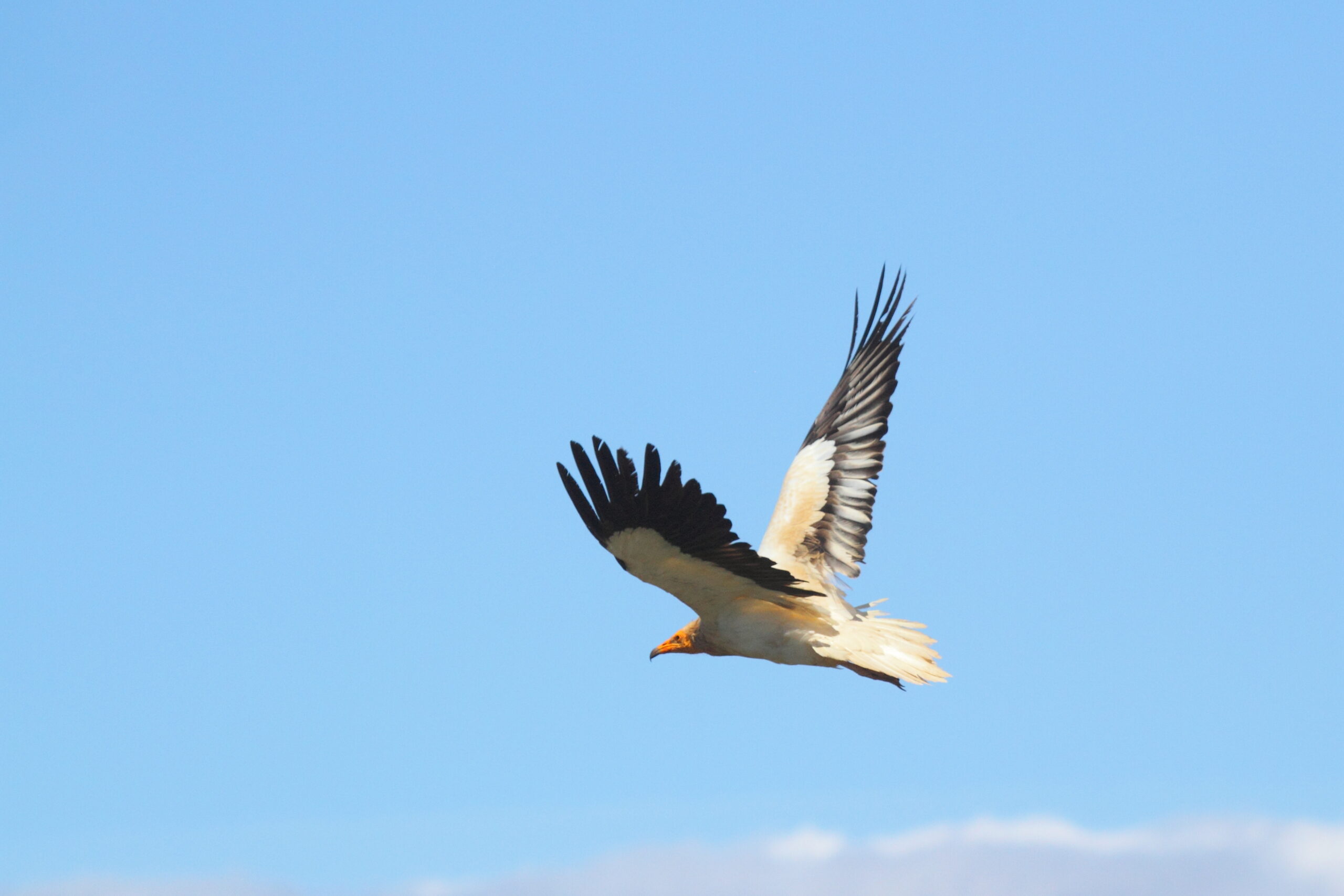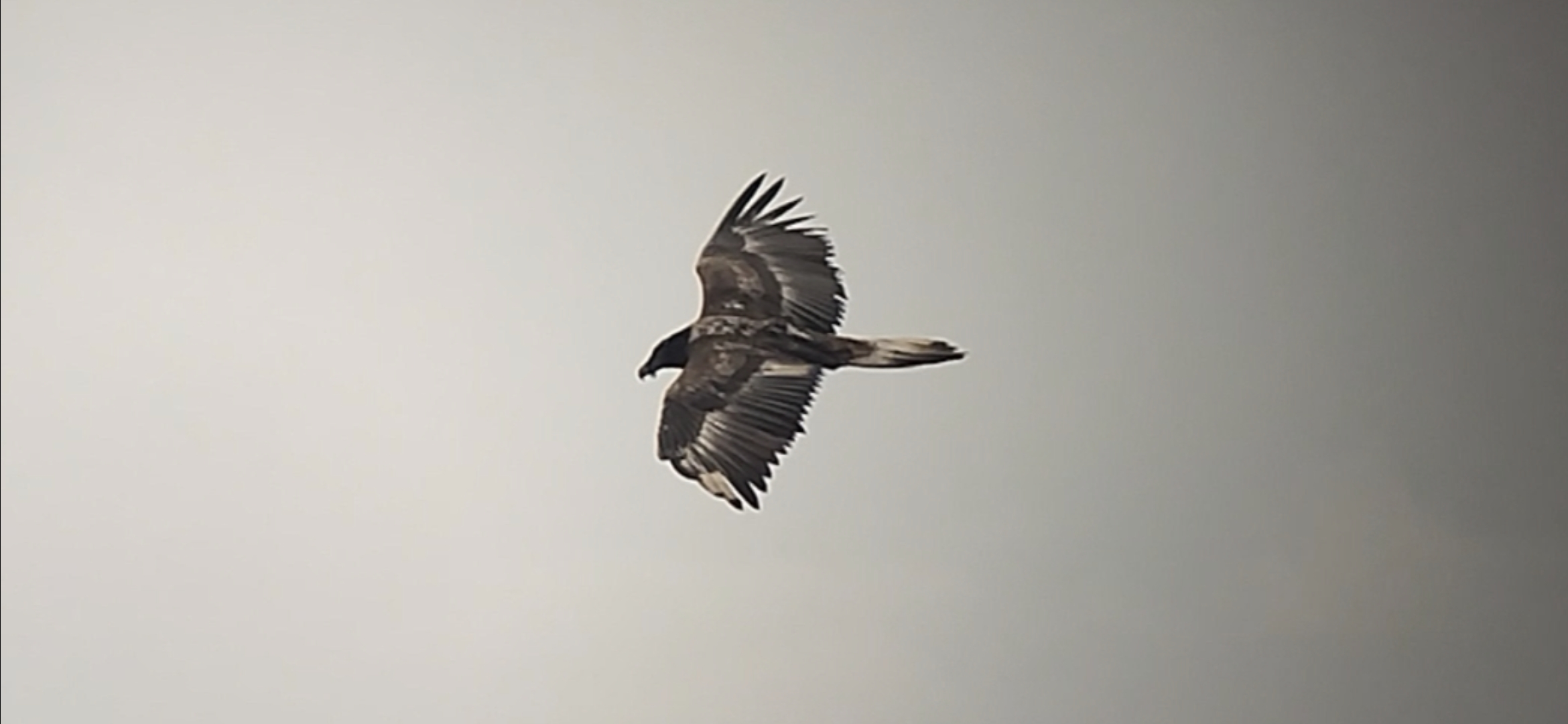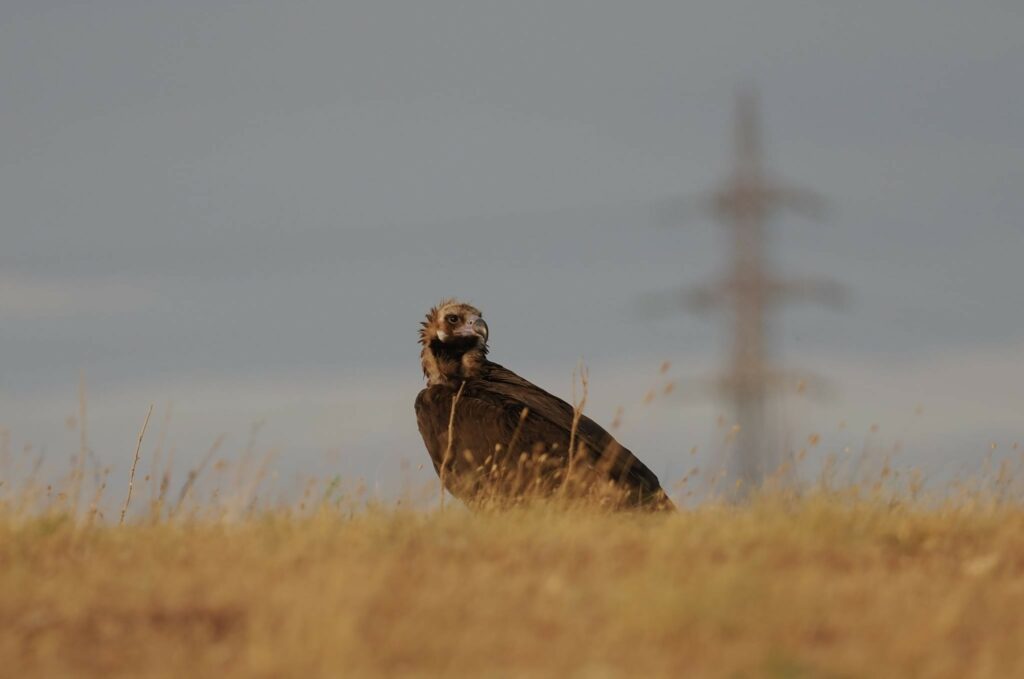
In this research update we provide a list of recent vulture-related research articles covering a range of topics including movement ecology, environmental contaminants, population dynamics, conservation measures and methods for monitoring and research, mainly published between November 2019 and June 2020.
If the full articles are not freely available, please contact the authors directly. Please refer to previous research updates on the VCF website for other recent articles which are not included here.
If you notice any missing articles please do let us know!
Monitoring and applied research methods:
- Jon Morant, José Antonio González-Oreja, José Enrique Martínez, Pascual López-López, Iñigo Zuberogoitia, (2020) Applying economic and ecological criteria to design cost-effective monitoring for elusive species. Ecological Indicators, https://doi.org/10.1016/j.ecolind.2020.106366
- Andrea Santangeli, Veli-Matti Pakanen, Peter Bridgeford, Mark Boorman, Holger Kolberg, Ana Sanz-Aguilar (2020). The relative contribution of camera trap technology and citizen science for estimating survival of an endangered African vulture. Biological Conservation. https://doi.org/10.1016/j.biocon.2020.108593
- Christiaan W Brink, Sonja Krüger & Arjun Amar (2020) Potential release sites and strategies for a Bearded Vulture Gypaetus barbatus reintroduction in South Africa, Ostrich, DOI: 10.2989/00306525.2020.1753252
- Mousumi Ghosh-Harihar, Nehal Gurung, Harsh Shukla, Ishani Sinha, Awadhesh Pandit, Vibhu Prakash, Rhys E. Green, Uma Ramakrishnan (2020). Metabarcoding for parallel identification of species, sex and diet: an application to the conservation of globally-threatened Gyps vultures. bioRxiv 756247; doi: https://doi.org/10.1101/756247
Movements, spatial ecology and migration:
- Subedi, T.R., Pérez‐García, J.M., Sah, S.A., Gurung, S., Baral, H.S., Poudyal, L.P., Lee, H., Thomsett, S., Virani, M.Z. and Anadón, J.D. (2020), Spatial and temporal movement of the Bearded Vulture using GPS telemetry in the Himalayas of Nepal. Ibis, 162: 563-571. https://doi.org/10.1111/ibi.12799
- Gutiérrez‐Cánovas, C., Moleón, M., Mateo‐Tomás, P., Olea, P.P., Sebastián‐González, E. and Sánchez‐Zapata, J.A. (2020), Large home range scavengers support higher rates of carcass removal. Funct Ecol. Accepted Author Manuscript. doi:10.1111/1365-2435.13619
- Thompson, L., Barber, D., Bechard, M., Botha, A., Wolter, K., & Neser, W. et al. (2020). Variation in monthly sizes of home‐ranges of Hooded Vultures Necrosyrtes monachus in western, eastern and southern Africa. Ibis. doi: 10.1111/ibi.12836
- Holland, A.E., Byrne, M.E., Hepinstall-Cymerman, J. et al. (2019) Evidence of niche differentiation for two sympatric vulture species in the Southeastern United States. Mov Ecol 7, 31. https://doi.org/10.1186/s40462-019-0179-z
- Richard P. Reading, John Azua, Travis Garrett, David Kenny, Hansoo Lee, Woon Kee Paek, Nanette Reece, Purevsuren Tsolmonjav, Mary Jo Willis, Ganchimeg Wingard, Differential movement of adult and juvenile Cinereous Vultures (Aegypius monachus) (Accipitriformes: Accipitridae) in Northeast Asia. Journal of Asia-Pacific Biodiversity, 13:156-161, https://doi.org/10.1016/j.japb.2020.01.004
- Arizaga et al. (2020). Home range and habitat use of a bearded vulture Gypaetus barbatus L., 1758 along the western border of its Pyrenean distribution area. Munibe, Cienc. nat. 67, 2019 • pp. 7-17. https://doi.org/10.21630/mcn.2019.67.01
- Ruth García-Jiménez, José María Martínez-González, Pilar Oliva-Vidal, Josep Piqué, José Antonio Sesé & Antoni Margalida (2020) Nocturnal flights by Bearded Vultures Gypaetus barbatus detected for the first-time using GPS and accelerometer data, Bird Study, DOI: 10.1080/00063657.2020.1781054
Environmental contaminants such as lead, veterinary drugs and poisons:
- Eneko Arrondo, Joan Navarro, Juan Manuel Perez-García, Rafael Mateo, Pablo R. Camarero, Rosa C.Rodríguez Martin-Doimeadios, María Jiménez-Moreno, Ainara Cortés-Avizanda, Isabel Navas, Antonio Juan García-Fernández, José Antonio Sánchez-Zapata, José Antonio Donázar (2020). Dust and bullets: Stable isotopes and GPS tracking disentangle lead sources for a large avian scavenger. Environmental Pollution. https://doi.org/10.1016/j.envpol.2020.115022
- Plaza, P.I., Wiemeyer, G. and Lambertucci, S.A. (2020), Comparison of lead contamination among related scavenging birds sharing food sources: a call for caution when using surrogate species. Ibis. doi:10.1111/ibi.12815
- Patricia Mateo-Tomás, José Vicente López-Bao (2020). Poisoning poached megafauna can boost trade in African vultures. Biological Conservation, https://doi.org/10.1016/j.biocon.2019.108389
- Patricia Mateo-Tomás, Pedro P. Olea, Eva Mínguez, Rafael Mateo, Javier Viñuela (2020). Direct evidence of poison-driven widespread population decline in a wild vertebrate. Proceedings of the National Academy of Sciences. DOI: 10.1073/pnas.1922355117
- Yamaç, Elif et al. Heavy metal accumulation as a threat to the endangered Egyptian vulture( Neophron percnopterus L.) in Turkey. Turkish Journal of Zoology 43 (2019): 628-635. doi:10.3906/zoo-1903-21
- Wells, Butterworth & Richards (2020). A review of secondary pentobarbital poisoning in scavenging wildlife, companion animals and captive carnivores. Journal of Veterinary Forensic Sciences, 1(1), 1-15
Human-vulture interactions, influences and ecosystem services:
- Margalida, A., Donázar, J.A. (2020). Fake news and vultures. Nat Sustain. https://doi.org/10.1038/s41893-020-0534-5
- Fernando Ballejo, Pablo I. Plaza, Sergio A. Lambertucci (2020). The conflict between scavenging birds and farmers: Field observations do not support people’s perceptions. Biological Conservation. https://doi.org/10.1016/j.biocon.2020.108627
- Arrondo, E., Sanz-Aguilar, A., Pérez-García, J.M. et al. (2020) Landscape anthropization shapes the survival of a top avian scavenger. Biodivers Conserv 29, 1411–1425. https://doi.org/10.1007/s10531-020-01942-6
- Martin-Díaz, P., Cortés-Avizanda, A., Serrano, D. et al. (2020) Rewilding processes shape the use of Mediterranean landscapes by an avian top scavenger. Sci Rep 10, 2853. https://doi.org/10.1038/s41598-020-59591-2
- Sebastián‐González, E. et al. (2020), Network structure of vertebrate scavenger assemblages at the global scale: drivers and ecosystem functioning implications. Ecography. doi:10.1111/ecog.05083
- Natividad Aguilera-Alcalá, Zebensui Morales-Reyes, Berta Martín-López, Marcos Moleón, José Antonio Sánchez-Zapata (2020), Role of scavengers in providing non-material contributions to people, Ecological Indicators, https://doi.org/10.1016/j.ecolind.2020.106643.
- Ballejo et al. 2019. A long and troublesome journey: People’s perceptions and attitudes along the migratory path of a scavenger bird. Ethnobio Conserv 8:13. doi:10.15451/ec2019-10-8.13-1-13
- Brink, CW, Santangeli, A, Amar, A, et al. (2020). Perceptions of vulture supplementary feeding site managers and potential hidden risks to avian scavengers. Conservation Science and Practice. 2020;e237. https://doi.org/10.1111/csp2.237
- Brink, C.W., Santangeli, A., Amar, A., Wolter, K., Tate, G., Krüger, S., Tucker, A.S. and Thomson, R.L. (2020), Quantifying the spatial distribution and trends of supplementary feeding sites in South Africa and their potential contribution to vulture energetic requirements. Anim Conserv. doi:10.1111/acv.12561
Power lines, wind farms:
- Joana Bernardino, Ricardo C. Martins, Regina Bispo, Francisco Moreira (2019). Re-assessing the effectiveness of wire-marking to mitigate bird collisions with power lines: A meta-analysis and guidelines for field studies. Journal of Environmental Management, https://doi.org/10.1016/j.jenvman.2019.109651
- Miguel Ferrer, Virginia Morandini, Ryan Baumbusch, Roberto Muriel, Manuela De Lucas, Cecilia Calabuig (2020). Efficacy of different types of “bird flight diverter” in reducing bird mortality due to collision with transmission power lines. Global Ecology and Conservation, https://doi.org/10.1016/j.gecco.2020.e01130
- Sánchez, R., Sánchez, J., Oria, J. et al. Do supplemental perches influence electrocution risk for diurnal raptors? Avian Res 11, 20 (2020). https://doi.org/10.1186/s40657-020-00206-9
General ecology, behaviour and physiology:
- Antoni Margalida, Karl Schulze-Hagen, Bernhard Wetterauer, Cornelius Domhan, Pilar Oliva-Vidal, Michael Wink (2020) What do minerals in the feces of Bearded Vultures reveal about their dietary habits?, Science of The Total Environment, 728:138836, https://doi.org/10.1016/j.scitotenv.2020.138836
- Moreno-Opo R, Trujillano A, Margalida A. Larger size and older age confer competitive advantage: dominance hierarchy within European vulture guild. Sci Rep. 2020;10(1):2430. Published 2020 Feb 12. doi:10.1038/s41598-020-59387-4
- Jon Morant Etxebarria, Pascual López-López & Iñigo Zuberogoitia Arroyo (2019) Parental investment asymmetries of a globally endangered scavenger: unravelling the role of gender, weather conditions and stage of the nesting cycle, Bird Study, 66:3, 329-341, DOI: 10.1080/00063657.2019.1688251
- Donázar, J. A., Barbosa, J. M., García‐Alfonso, M., van Overveld, T., Gangoso, L., and de la Riva, M.. 2020. Too much is bad: increasing numbers of livestock and conspecifics reduce body mass in an avian scavenger. Ecological Applications 00( 00):e02125. 10.1002/eap.2125
- J.A. Donázar, A. Cortés-Avizanda, O. Ceballos, E. Arrondo, J.M. Grande, D. Serrano, (2020). Epizootics and sanitary regulations drive long-term changes in fledgling body condition of a threatened vulture. Ecological Indicators, Volume 113: 106188, https://doi.org/10.1016/j.ecolind.2020.106188
- Gutiérrez, J. S., Granadeiro, J. P., Belo, J., Correia, E., Henriques, M., Moniz, F., Paulino, J., Tomás, A., and Catry, T.. 2020. Sunning in extreme heat by the critically endangered hooded vulture: a strategy to fight ectoparasites? Ecology 101(5):e02948. 10.1002/ecy.2948
- Jackson, CR, Maddox, T, Mbise, FP, et al. (2020) A dead giveaway: Foraging vultures and other avian scavengers respond to auditory cues. Ecol Evol. 00: 1– 6. https://doi.org/10.1002/ece3.6366
Distribution, demography, phylogeny and population dynamics:
- Aresu, M., Rotta, A., Fozzi, A., Campus, A., Muzzeddu, M., Secci, D., . . . Berlinguer, F. (2020). Assessing the effects of different management scenarios on the conservation of small island vulture populations. Bird Conservation International, 1-18. doi:10.1017/S0959270920000040
- Arroyo, B., Lafitte, J., Sourp, E., Rousseau, D., Albert, L., Heuacker, V., Terrasse, J.F. and Razin, M. (2020), Population expansion and breeding success of Bearded Vultures Gypaetus barbatus in the French Pyrenees: results from long‐term population monitoring. Ibis. doi:10.1111/ibi.12852
- Margalida, A., Jiménez, J., Martínez, J. M., Sesé, J. A., García‐Ferré, D., Llamas, A., Razin, M., Colomer, M., and Arroyo, B.. 2020. An assessment of population size and demographic drivers of the Bearded Vulture using integrated population models. Ecological Monographs 00( 00):e01414. 10.1002/ecm.1414
- van Overveld, T., Gangoso, L., García-Alfonso, M. et al. (2020) Seasonal grouping dynamics in a territorial vulture: ecological drivers and social consequences. Behav Ecol Sociobiol 74, 28. https://doi.org/10.1007/s00265-020-2807-4
- Sáenz-Jiménez, F., Rojas-Soto, O., Pérez-Torres, J., Martínez-Meyer, E., & Sheppard, J. (2020). Effects of climate change and human influence in the distribution and range overlap between two widely distributed avian scavengers. Bird Conservation International, 1-19. doi:10.1017/S0959270920000271
- Christopher J. W. McClure, Sarah E. Schulwitz, David L. Anderson, Bryce W. Robinson, Elizabeth K. Mojica, Jean-Francois Therrien, M. David Oleyar, Jeff Johnson Commentary: Defining Raptors and Birds of Prey. Journal of Raptor Research, 53(4), 419-430.
- Leepile, L., Maude, G., Hancock, P., Reading, R., Bridges, B., Hartley, R., & Amar, A. (2020). Changes in nesting numbers and breeding success of African White-backed Vulture Gyps africanus in north-central Botswana. Bird Conservation International, 1-18. doi:10.1017/S0959270920000179
- Ghimire, Suman & Bhusal, Krishna & Pandeya, Pratik. (2020). Lowest Altitudinal Breeding Record of Bearded Vulture Gypaetus barbatus in Nepal. Bird Conservation Nepal, 9:31 – 33. [available via Research Gate]
General conservation:
- Colomer, M.À., Oliva‐Vidal, P., Jiménez, J., Martínez, J.M. and Margalida, A. (2020), Prioritizing among removal scenarios for the reintroduction of endangered species: insights from bearded vulture simulation modeling. Anim Conserv. doi:10.1111/acv.12549
- Williams, DR, Balmford, A, Wilcove, DS. The past and future role of conservation science in saving biodiversity. Conservation Letters. 2020;e12720. https://doi.org/10.1111/conl.12720
- McGowan, J., Beaumont, L.J., Smith, R.J. et al. Conservation prioritization can resolve the flagship species conundrum. Nat Commun 11, 994 (2020). https://doi.org/10.1038/s41467-020-14554-z
Additions after initial posting
- Chiereghin, M and Sartirana, F. (2020), Prima nidificazione con successo di Gipeto (Gypaetus barbatus) in Piemonte dall’inizio del progetto di reintroduzione della specie sulle Alpi. Rivista Italiana di Ornitologia. 89. https://doi.org/10.4081/rio.2019.439
- Stoyanov, G., Peshev, H., Kmetova-Biro, E., Opramolla, G., Moreno Casado, C., Posillico, M., Licheva, V., and Stoynov, E. (2020) Observation in Bulgaria of a Griffon Vulture Gyps fulvus tagged in Spain, Ringing & Migration. 10.1080/03078698.2019.1759905
Sign up to our monthly newsletter and stay updated with Europe’s vultures!



